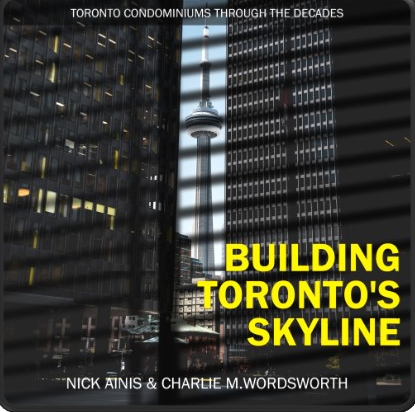By Nick Ainis
Fusioncorp Developments
So often, looking back provides us with a framework for looking forward. The evolution of the condominium in North American cities, especially Toronto, is an example.
In researching and co-writing the book, Building Toronto’s Skyline: Toronto Condominiums Through the Decades, I was fascinated by how the development of the condo and housing in the city were spurred by social, legislative, technical and economic factors. From the precursors to condos such as boarding houses and apartment buildings, through to the explosive demand for condos in the late 20th and early 21st centuries, the book presents an exploration of what makes a condo a condo in Canada, the pros and cons of this type of housing, as well as the future of what condos might look like.
Current conundrum
The current conundrum we are dealing with is the lack of supply, and more importantly, affordability, in the housing market. Recently, it was announced that the HST on purpose-built rental apartment buildings would be removed, which is some help, as we desperately need more reasonably priced rental options. Explosive immigration has spawned explosive demand for all housing, which in turn has caused prices to skyrocket. Of course, the pandemic and the supply chain problems it brought added complexities to that situation. Between 2010 and 2018, 165,828 condo units were finished, and from 2002 to 2018, 186,000 condo units were registered, accounting for 72 per cent of the city’s growth. By 2020, condominiums became the preferred way to accommodate Toronto’s growth.
Condo culture shifted dramatically long before that, in 1991, when a court ruling cited adult-only buildings as unconstitutional under Canada’s Human Rights Code. Once the go-to for seniors and empty-nesters, condominiums then became available to all segments of the marketplace, from professional singles to families. As people got busier, the appeal of having major maintenance handled for them through a condominium corporation was enormous, and still is.
Another situation that contributed to the condo craze was Ontario’s protection of the Greenbelt and other sensitive areas. This essentially cut down on the available land for development. The answer was to build up instead of out – and intensification, especially in Toronto, became the target. Developers were encouraged to build condominiums in urban locations close to amenities and public transit, and they have done just that.
Public and private cooperation
The question today is, how can we possibly increase supply and make housing within the reach of the average Canadian? One approach is to study the past, especially where government intervention and cooperation with the private sector have been involved. For example, wartime houses were a staple in Canada during the 1940s. It was announced in December 2023 that the federal government is reviving a Canada Mortgage and Housing Corp. program to provide standardized housing blueprints to builders. Although this is not an overarching solution, some of it may work, and frankly, the experimentation process is necessary. It is a step in the public and private sectors working together in an active way.
As the years went on, improvements in construction technology, metallurgy and resource management enabled developers to build highrises at more feasible costs. In the book, I feature some of the well-situated iconic condos in Toronto that showcase what technological advancements, exceptional locations, and ingenious architecture can do. Theatre Park, which overlooks Toronto’s Roy Thomson Hall, offers suites that receive a lot of light in an area where natural light is scarce. Glass curtain walls, diagonal exposed exterior braces, and floor-to-ceiling windows make this a desirable and sought-after residence. South of downtown Toronto, Ten York is a 67-storey condo with cutting-edge amenities and technology. The Financial District is home to the Shangri-La, one of the best condo-hotel offerings in the city. Its distinctive shape makes it one of the most recognizable buildings on Toronto’s skyline.
Over the past few years, condominiums have enabled many buyers to enter homeownership, but this trend has also brought challenges for residents. To name a few, there may be a lack of areas where children can play; some balconies may be unusable because of high winds; and highrises that are clustered along the street limit the sunlight that gets through.
Evolving preferences
Of course, amid all of this, consumer preferences in housing have evolved as well. Today’s buyers are quite different from those who purchased condos decades ago. As we go forward, we need more research on how intensification affects infrastructure and services, how people use spaces, as well as post-occupancy assessments to guide policies for future design. Sustainability is another major consideration, as buyers are more educated than ever before on the topic of carbon footprints. Climate change and new laws pertaining to it will take their place in future design.
Regardless, condos are here to stay and are likely to remain a major residential force in Toronto, Canada and North America as a whole. We can look forward to the industry evolving once again to satisfy changing needs, laws and preferences.
The author of Building Toronto’s Skyline: Toronto Condominiums Through the Decades, Nick Ainis is Founder & CEO of Fusioncorp Developments, a boutique construction management company and general contracting organization specializing in multi-unit residential condominiums. fusioncorp.ca











